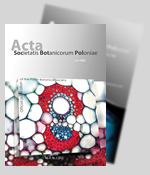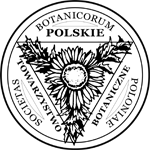The Coral of Plants
Abstract
Keywords
References
Adl, S. M., Simpson, A. G. B., Farmer, M. A., Andersen, R. A., Anderson, O. R., Barta, J. R., Bowser, S. S., Brugerolle, G., Fensome, R. A., Fredericq, S., James, T. Y., Karpov, S., Kugrens, P., Krug, J., Lane, C. E., Lewis, L. A., Lodge, J., Lynn, D. H., Mann, D. G., … Taylor, M. F. J. R. (2005). The new higher level classification of eukaryotes with emphasis on the taxonomy of protists. Journal of Eukaryotic Microbiology, 52(5), 399–451. https://doi.org/10.1111/j.1550-7408.2005.00053.x
Angiosperm Phylogeny Group. (1998). An ordinal classification for the families of flowering plants. Annals of the Missouri Botanical Garden, 85(4), 531–553. https://doi.org/10.2307/2992015
Angiosperm Phylogeny Group II. (2003). An update of the Angiosperm Phylogeny Group classification for the orders and families of flowering plants: APG II. Botanical Journal of the Linnean Society, 141(4), 399–436. https://doi.org/10.1046/j.1095-8339.2003.t01- 1-00158.x
Angiosperm Phylogeny Group III. (2009). An update of the Angiosperm Phylogeny Group classification for the orders and families of flowering plants: APG III. Botanical Journal of the Linnean Society, 161(2), 105–121. https://doi.org/10.1111/j.1095- 8339.2009.00996.x
Angiosperm Phylogeny Group IV. (2016). An update of the Angiosperm Phylogeny Group classification for the orders and families of flowering plants: APG IV. Botanical Journal of the Linnean Society, 181(1), 1–20. https://doi.org/10.1111/boj.12385
Archibald, D. (2009). Edward Hitchcock’s pre-Darwinian (1840) “Tree of life”. Journal of the History of Biology, 42, 561–592. https://doi.org/10.1007/s10739-008-9163-y
Archibald, D. (2014). Aristotle’s ladder, Darwin’s tree. Columbia University Press. https://doi.org/10.7312/columbia/9780231164122.001.0001
Baum, B. R., Duncan, T., & Phillips, R. B. (1984). A bibliography of numerical phenetic studies in systematic botany. Annals of the Missouri Botanical Garden, 71, 1044–1060.
Baum, D. A., & Offner, S. (2008). Phylogenies and tree-thinking. The American Biology Teacher, 70, 222–229. https://doi.org/10.2307/30163248
Bredekamp, H. (2005). Darwins Korallen: Die frühen Evolutionsdiagramme und die Tradition der Naturgeschichte [Darwin’s Corals: The early evolution diagrams and the tradition of natural history]. Klaus Wagenbruch.
Cantino, P. D., Doyle, J. A., Graham, S. W., Judd, W. S., Olmstead, R. G., Soltis, D. E., Soltis, P. S., & Donoghue, M. J. (2007). Towards a phylogenetic nomenclature of Tracheophyta. Taxon, 56, 822–846. https://doi.org/10.2307/25065864
Cascales-Miñana, B., Steemans, P., Servais, T., Lepot, K., & Gerrienne, P. (2019). An alternative model for the earliest evolution of vascular plants. Lethaia, 52, 445–453. https://doi.org/10.1111/let.12323
Cavalier-Smith, T. (1981). Eukaryote kingdoms: Seven or nine? BioSystems, 14(3–4), 461–481. https://doi.org/10.1016/0303-2647(81)90050-2
Cellinese, N., Baum, D. A., & Mishler, B. D. (2012). Species and phylogenetic nomenclature. Systematic Biology, 61(5), 885–891. https://doi.org/10.1093/sysbio/sys035
Chase, M. W., Soltis, D. E., Olmstead, R. G., Morgan, D., Les, D. H., Mishler, B. D., Duvall, M. R., Price, R. A., Hills, H. G., Qiu, Y. L., Kron, K. A., Rettig, J. H., Conti, E., Palmer, J. D., Manhart, J. R., Sytsma, K. J., Michaels, H. J., Kress, W. J., Karol, K. G., … Albert, V. A. (1993). Phylogenetics of seed plants: An analysis of nucleotide sequences from the plastid gene rbcL. Annals of the Missouri Botanical Garden, 80(3), 528–580. https://doi.org/10.2307/2399846
Christenhusz, M. J. M., & Byng, J. W. (2016). The number of known plants species in the world and its annual increase. Phytotaxa, 261(3), 201–217. https://doi.org/10.11646/phytotaxa.261.3.1
Cohen, K. M., Finney, S. C., Gibbard, P. L., & Fan, J. X. (2013). The ICS International Chronostratigraphic Chart. Episodes, 36, 199–204. https://doi.org/10.18814/epiiugs/2013/v36i3/002
Costa, J. T. (2009). The annotated origin. A facsimile of the first edition of “On the origin of species” by Charles Darwin. Belknap Press.
Crepet, W. L., & Niklas, K. J. (2018). Early tracheophyte phylogeny: A preliminary assessment of homologies. In M. J. Krings, C. J. Harper, N. R. Cúneo, & G. W. Rothwell (Eds.), Transformative paleobotany (pp. 69–92). Academic-Elsevier. https://doi.org/10.1016/B978-0-12-813012-4.00005-X
Dayrat, B., Cantino, P. D., Clarke, J. A., & Queiroz, K. (2008). Species names in the PhyloCode: The approach adopted by the International Society for Phylogenetic Nomenclature. Systematic Biology, 57, 507–514. https://doi.org/10.1080/10635150802172176
DiMichele, W. A., & Bateman, R. M. (1996). Plant paleoecology and evolutionary inference: Two examples from the Paleozoic. Review of Paleobotany and Palynology, 90, 223–247. https://doi.org/10.1016/0034-6667(95)00085-2
Elgorriaga, A., Escapa, I. H., Rothwell, G. W., Tomescu, A. M. F., & Cúneo, N. R. (2018). Origin of Equisetum: Evolution of horsetails (Equisetales) within the major euphyllophyte clade Sphenopsida. American Journal of Botany, 105(8), 1286–1303. https://doi.org/10.1002/ajb2.1125
Funk, V. A., & Wagner, W. H. (1982). A bibliography of botanical cladistics: I. Brittonia, 34, 118–124. https://doi.org/10.2307/2806409
Gawryluk, R. M. R., Tikhonenkov, D. V., Hehenberger, E., Husnik, F., Mylnikov, A. P., & Keeling, P. J. (2019). Non-photosynthetic predators are sister to red algae. Nature, 572(Article 7768), 240–243. https://doi.org/10.1038/s41586-019-1398-6
Gibson, T. M., Shih, P. M., Cumming, V. M., Fischer, W. W., Crockford, P. W., Hodgskiss, M. S. W., Wörndle, S., Creaser, R. A., Rainbird, R. H., Skulski, T. M., & Halverson, G. P. (2017). Precise age of Bangiomorpha pubescens dates the origin of eukaryotic photosynthesis. Geology, 46(2), 135–138. https://doi.org/10.1130/G39829.1
Gitzendanner, M. A., Soltis, P. S., Wong, G. K. S., Ruhfel, B. R., & Soltis, D. E. (2018). Plastid phylogenomic analysis of green plants: A billion years of evolutionary history. American Journal of Botany, 105(3), 291–301. https://doi.org/10.1002/ajb2.1048
Gomez, B., Daviero-Gomez, V., Coiffard, C., Martín-Closas, C., & Dilcher, D. L. (2015). Montsechia, an ancient aquatic angiosperm. Proceedings of the National Academy of Sciences of the United States of America, 112(35), 10985–10988. https://doi.org/10.1073/pnas.1509241112
Grewe, F., Guo, W., Gubbels, E. A., Hansen, A. K., & Mower, J. P. (2013). Complete plastid genomes from Ophioglossum californicum, Psilotum nudum, and Equisetum hyemale reveal an ancestral land plant genome structure and resolve the position of Equisetales among monilophytes. BMC Evolutionary Biology, 13, Article 8. https://doi.org/10.1186/1471-2148-13-8
Griffing, L. R. (2011). Who invented the dichotomous key? Richard Waller’s watercolors of the herbs of Britain. American Journal of Botany, 98(12), 1911–1923. https://doi.org/10.3732/ajb.1100188
Guiry, M. D., & Guiry, G. M. (2020). AlgaeBase. https://www.algaebase.org
Hellström, P. (2019). Trees of knowledge. Science and the shape of genealogy. Acta Universitatis Upsalienses, 51, 1–339.
Hennig, W. (1966). Phylogenetic systematics. University of Illinois Press.
Hernick, L. V., Landing, E., & Bartowski, K. E. (2008). Earth’s oldest liverworts – Metzgeriothallus sharonae sp. nov. from the Middle Devonian (Givetian) of eastern New York, USA. Review of Palaeobotany and Palynology, 148(2), 154–162. https://doi.org/10.1016/j.revpalbo.2007.09.002
Hilton, J., & Bateman, R. M. (2006). Pteridosperms are the backbone of seed-plant phylogeny. Journal of the Torrey Botanical Society, 133, 119–168. https://doi.org/dnd8v6
Hull, D. L. (1985). Darwinism as a historical entity: A historiographic proposal. In D. Kohn (Ed.), The Darwinian heritage (pp. 773–812). Princeton University Press. https://doi.org/10.1515/9781400854714.773
Keeling, P. J. (2013). The number, speed, and impact of plastid endosymbiosis in eukaryotic evolution. Annual Review of Plant Biology, 64, 583–607. https://doi.org/10.1146/annurev-arplant-050312-120144
Kenrick, P., & Crane, P. R. (1997). The origin and early evolution of plants on land. Smithsonian Institution Press. https://doi.org/10.1038/37918
Kumar, S., Stecher, S., Suleski, M., & Hedges, S. B. (2017). TimeTree: A resource for timelines, timetrees, and divergence times. Molecular Biology and Evolution, 34, 1812–1819. https://doi.org/10.1093/molbev/msx116
Kutschera, U. (2011). From the scala naturae to the symbiogenetic and dynamic tree of life. Biology Direct, 6, Article 33. https://doi.org/10.1186/1745-6150-6-33
LaRocca, D. (2013). Emerson’s English traits and the natural history of metaphor. Bloomsbury.
Lecointre, G. (2015). Descent (filiation). In T. Heams, P. Huneman, G. Lecointre, & M. Silberstein (Eds.), Handbook of evolutionary thinking in the sciences (pp. 159–207). Springer. https://doi.org/10.1007/978-94-017-9014-7_9
Leliaert, F., Smith, D. R., Moreau, H., Herron, M. D., Verbruggen, H., Delwiche, C. F., & Clerck, O. D. (2012). Phylogeny and molecular evolution of the green algae. Critical Reviews in Plant Sciences, 31(1), 1–46. https://doi.org/10.1080/07352689.2011.615705
Leliaert, F., Tronholm, A., Lemieux, C., Turmel, M., DePriest, M. S., Bhattacharya, D., Karol, K. G., Fredericq, S., Zechman, F. W., & Lopez-Bautista, J. M. (2016). Chloroplast phylogenomic analyses reveal the deepest-branching lineage of the Chlorophyta, Palmophyllophyceae class. nov. Scientific Reports, 6, Article 25367. https://doi.org/10.1038/srep25367
Li, F. W., Nishiyama, T., Waller, M., Frangedakis, E., Keller, J., Li, Z., Fernandez-Pozo, N., Barker, M. S., Bennett, T., Blázquez, M. A., Cheng, S., Cuming, A. C., de Vries, J., de Vries, S., Delaux, P. M., Diop, I. S., Harrison, C. J., Hauser, D., Hernández- García, J., … Szövényi, P. (2020). Anthoceros genomes illuminate the origin of land plants and the unique biology of hornworts. Nature Plants, 6, 259–272. https://doi.org/10.1038/s41477-020-0618-2
Li, H. T., Yi, T. S., Gao, L. M., Ma, P. F., Zhang, T., Yang, J. B., Gitzendanner, M. A., Fritsch, P. W., Cai, J., Luo, Y., Wang, H., Bank, M., Zhang, S. D., Wang, Q. F., Wang, J., Zhang, Z. R., Fu, C. N., Yang, J., Hollingsworth, P. M., … Li, D. Z. (2019). Origin of angiosperms and the puzzle of the Jurassic gap. Nature Plants, 5, 461–470. https://doi.org/10.1038/s41477-019-0421-0
Mackiewicz, P., & Gagat, P. (2014). Monophyly of Archaeplastida supergroup and relationships among its lineages in the light of phylogenetic and phylogenomic studies. Are we close to a consensus? Acta Societatis Botanicorum Poloniae, 83(4), 263–280. https://doi.org/10.5586/asbp.2014.044
Margulis, L., Chapman, M., Guerrero, R., & Hall, J. (2006). The last eukaryotic common ancestor (LECA): Acquisition of cytoskeletal motility from aerotolerant spirochetes in the Proterozoic Eon. Proceedings of the National Academy of Sciences of the United States of America, 103(35), 13080–13085. https://doi.org/10.1073/pnas.0604985103
Mishler, B. D. (2014). History and theory in the development of phylogenetics in botany. In A. Hamilton (Ed.), Evolution of phylogenetic systematics (pp. 189–210). University of California Press.
Morrison, D. A. (2013). Phylogenetic networks 1900–1990. Genealogical world of phylogenetic networks. http://phylonetworks.blogspot.com/2013/09/phylogenetic-networks-1900-1990.html
Muñoz-Gómez, S. A., Mejía-Franco, F. G., Durnin, K., Colp, M., Grisdale, C. J., Archibald, J. M., & Slamovits, C. H. (2017). The new red algal subphylum Proteorhodophytina comprises the largest and most divergent plastid genomes known. Current Biology, 27(11), 1677–1684. https://doi.org/10.1016/j.cub.2017.04.054
Niklas, K. J., Tiffney, B. H., & Knoll, A. H. (1985). Patterns in vascular land plant diversification: An analysis at the species level. In J. W. Valentine (Ed.), Phanerozoic diversity patterns: Profiles in macroevolution (pp. 97–128). Princeton University Press. https://doi.org/10.1515/9781400855056.97
Palmer, J. D., Soltis, D. E., & Chase, M. W. (2004). The plant tree of life: An overview and some points of view. American Journal of Botany, 91(10), 1437–1445. https://doi.org/10.3732/ajb.91.10.1437
Penny, D. (2011). Darwin’s theory of descent with modification, versus the biblical tree of life. PLoS Biology, 9(7), Article 1001096. https://doi.org/10.1371/journal.pbio.1001096
Pietsch, T. W. (2012). Trees of life. The Johns Hopkins University Press.
Podani, J. (2010). Monophyly and paraphyly: A discourse without end? Taxon, 59, 1011–1015. https://doi.org/10.1002/tax.594002
Podani, J. (2013). Tree thinking, time and topology: Comments on the interpretation of tree diagrams in evolutionary/phylogenetic systematics. Cladistics, 29, 315–327. https://doi.org/10.1111/j.1096-0031.2012.00423.x
Podani, J. (2015). A növények evolúciója és osztályozása – Rendhagyó rendszertan [Evolution and systematics of plants – Ordering without orders]. Eötvös Kiadó.
Podani, J. (2017). Different from trees, more than metaphors: Branching silhouettes-corals, cacti, and the oaks. Systematic Biology, 66(5), 737–753. https://doi.org/10.1093/sysbio/syx039
Podani, J. (2019). The Coral of Life. Evolutionary Biology, 46, 123–144. https://doi.org/10.1007/s11692-019-09474-w
Pteridophyte Phylogeny Group – PPG I. (2016). A community-derived classification for extant lycophytes and ferns. Journal of Systematics and Evolution, 54(6), 563–603. https://doi.org/10.1111/jse.12229
Qiu, Y. L., Li, L., Wang, B., Chen, Z., Knoop, V., Groth-Malonek, M., Dombrovska, O., Lee, J., Kent, L., Rest, J., Estabrook, G. F., Hendry, T. A., Taylor, D. W., Testa, C. M., Ambros, M., Crandall-Stotler, B., Duff, R. J., Stech, M., Frey, W., … Davis, C. C. (2006). The deepest divergences in land plants inferred from phylogenomic evidence. Proceedings of the National Academy of Sciences of the United States of America, 103(42), 15511–15516. https://doi.org/10.1073/pnas.0604985103
Ragan, M. A. (2009). Trees and networks before and after Darwin. Biology Direct, 4, Article 43. https://doi.org/10.1186/1745-6150-4-43
Rosindell, J., & Harmon, L. J. (2012). OneZoom: A fractal explorer for the tree of life. PLoS Biology, 10(10), Article e1001406. https://doi.org/10.1371/journal.pbio.1001406
Rothwell, G. W., & Stockey, R. A. (2008). Phylogeny and evolution of ferns: A paleontological perspective. In T. A. Ranker & C. H. Haufler (Eds.), Biology and evolution of ferns and lycophytes (pp. 332–366). Cambridge University Press. https://doi.org/10.1017/CBO9780511541827.014
Ruhfel, B. R., Gitzendanner, M. A., Soltis, P. S., Soltis, D. E., & Burleigh, J. G. (2014). From algae to angiosperms – Inferring the phylogeny of green plants (Viridiplantae) from 360 plastid genomes. BMC Evolutionary Biology, 14, Article 23. https://doi.org/10.1186/1471-2148-14-23
Salamon, M. A., Gerrienne, P., Steemans, P., Gorzelak, P., Filipiak, P., Hérissé, A. L., Paris, F., Cascales-Miñana, B., Brachaniec, T., Misz-Kennan, M., Niedźwiedzki, R., & Trela, W. (2018). Putative late Ordovician land plants. New Phytologist, 218, 1305–1309. https://doi.org/10.1111/nph.15091
Sánchez-Baracaldo, P., Raven, J. A., Pisani, D., & Knoll, A. H. (2017). Early photosynthetic eukaryotes inhabited low-salinity habitats. Proceedings of the National Academy of Sciences of the United States of America, 114(37), E7737–E7745. https://doi.org/10.1073/pnas.1620089114
Servais, T., Cascales-Miñana, B., Cleal, C. J., Gerrienne, P., Harper, D. A. T., & Neumann, M. (2019). Revisiting the great Ordovician diversification of land plants: Recent data and perspectives. Palaeogeography, Palaeoclimatology, Palaeoecology, 534, Article 109280. https://doi.org/10.1016/j.palaeo.2019.109280
Shelton, G. W. K., Stockey, R. A., Rothwell, G. W., & Tomescu, A. M. F. (2015). Exploring the fossil history of pleurocarpous mosses: Tricostaceae fam. nov. from the Cretaceous of Vancouver Island, Canada. American Journal of Botany, 102(11), 1883–1900. https://doi.org/10.3732/ajb.1500360
Smith, S. A., & Brown, J. W. (2018). Constructing a broadly inclusive seed plant phylogeny. American Journal of Botany, 105(3), 302–314. https://doi.org/10.1002/ajb2.1019
Sneath, P. H. A., & Sokal, R. (1973). Numerical taxonomy. W. H. Freeman.
Sokal, R., & Sneath, P. H. A. (1963). Principles of numerical taxonomy. W. H. Freeman.
Sokoloff, D. D., Rudall, P. J., Bateman, R. M., & Remizowa, M. (2015). Functional aspects of the origin and subsequent evolution of cotyledons in seed plants. Botanica Pacifica, 4(2), 35–47. https://doi.org/10.17581/bp.2015.04208
Sporne, K. R. (1974). The morphology of angiosperms. Hutchinson & Co.
Stevens, P. F. (2001). Angiosperm Phylogeny Website. Version 14, July 2017 (and more or less continuously updated since). http://www.mobot.org/MOBOT/research/APweb/
Stewart, W. N., & Rothwell, G. W. (1993). Paleobotany and the evolution of plants (2nd ed.). Cambridge University Press.
Stuessy, T. F. (2009). Plant taxonomy (2nd ed.). Columbia University Press.
Sundberg, P. E. R., & Pleijel, F. (1994). Phylogenetic classification and the definition of taxon names. Zoologica Scripta, 23, 19–25. https://doi.org/10.1111/j.1463- 6409.1994.tb00369.x
Tang, Q., Pang, K., Yuan, X., & Xuaio, S. (2020). A one-billion-year-old multicellular chlorophyte. Nature Ecology and Evolution, 4, 543–549. https://doi.org/10.1038/s41559- 020-1122-9
Tassy, P. (2011). Trees before and after Darwin. Journal of Zoological Systematics and Evolutionary Research, 49, 89–101. https://doi.org/10.1111/j.1439-0469.2010.00585.x
Thorne, R. F. (1992). Classification and geography of the flowering plants. Botanical Review, 58, 225–327. https://doi.org/10.1007/BF02858611
Wagner, W. H. (1980). Origin and philosophy of the groundplan-divergence method of cladistics. Systematic Botany, 5, 173–193. https://doi.org/10.2307/2418624
Whittaker, E. H. (1969). New concepts of kingdoms of organisms. Science, 163, 150–160. https://doi.org/10.1126/science.163.3863.150
Yang, E. C., Boo, S. M., Bhattacharya, D., Saunders, G. W., Knoll, A. H., Fredericq, S., Graf, L., & Yoon, H. S. (2016). Divergence time estimates and the evolution of major lineages in the florideophyte red algae. Scientific Reports, 6, Article 21361. https://doi.org/10.1038/srep21361
Zuljevic, A., Kaleb, S., Peña, V., Despalatovic, I., Cvitkovic, I., Clerck, O. D., Gall, L. L., Falace, A., Vita, F., Braga, J. C., & Antolic, B. (2016). First freshwater coralline alga and the role of local features in a major biome transition. Scientific Reports, 6, Article 19642. https://doi.org/10.1038/srep19642
DOI: https://doi.org/10.5586/asbp.8937
|
|
|








